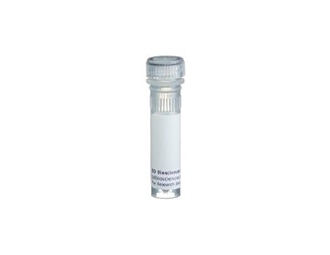-
抗体試薬
- フローサイトメトリー用試薬
-
ウェスタンブロッティング抗体試薬
- イムノアッセイ試薬
-
シングルセル試薬
- BD® AbSeq Assay | シングルセル試薬
- BD Rhapsody™ Accessory Kits | シングルセル試薬
- BD® Single-Cell Multiplexing Kit | シングルセル試薬
- BD Rhapsody™ Targeted mRNA Kits | シングルセル試薬
- BD Rhapsody™ Whole Transcriptome Analysis (WTA) Amplification Kit | シングルセル試薬
- BD Rhapsody™ TCR/BCR Profiling Assays (VDJ Assays) | シングルセル試薬
- BD® OMICS-Guard Sample Preservation Buffer
-
細胞機能評価のための試薬
-
顕微鏡・イメージング用試薬
-
細胞調製・分離試薬
-
- BD® AbSeq Assay | シングルセル試薬
- BD Rhapsody™ Accessory Kits | シングルセル試薬
- BD® Single-Cell Multiplexing Kit | シングルセル試薬
- BD Rhapsody™ Targeted mRNA Kits | シングルセル試薬
- BD Rhapsody™ Whole Transcriptome Analysis (WTA) Amplification Kit | シングルセル試薬
- BD Rhapsody™ TCR/BCR Profiling Assays (VDJ Assays) | シングルセル試薬
- BD® OMICS-Guard Sample Preservation Buffer
- Japan (Japanese)
-
Change country/language
Old Browser
Looks like you're visiting us from {countryName}.
Would you like to stay on the current country site or be switched to your country?




Immunohistochemical staining of SV40 large T, small t antigen. Cytospins of SV40 transformed COS-7 cells were acetone fixed and stained with mouse anti-SV40 largeT, small t antigen (Cat.No. 554151) (left panel) or with an isotype control (right panel). SV40 T-ag staining is localized to the nucleus of the cells.


BD Pharmingen™ Biotin Mouse Anti-SV40 Large T and Small t Antigens

Regulatory Statusの凡例
Any use of products other than the permitted use without the express written authorization of Becton, Dickinson and Company is strictly prohibited.
Preparation and Storage
推奨アッセイ手順
By SDS-PAGE, T-ag migrates at 90-100 kDa and t-ag at 15-20 kDa. COS-7 monkey kidney cells (ATCC CRL-1651), other established SV40-transformed cell lines, SV40-virus infected cells, or cells transfected with SV40 DNA should be used as a positive control.
Product Notices
- Since applications vary, each investigator should titrate the reagent to obtain optimal results.
- Please refer to www.bdbiosciences.com/us/s/resources for technical protocols.
- Caution: Sodium azide yields highly toxic hydrazoic acid under acidic conditions. Dilute azide compounds in running water before discarding to avoid accumulation of potentially explosive deposits in plumbing.
Simian virus 40 (SV40) is a small DNA virus encoded by 5.2 kb of double-stranded DNA. SV40 large T-antigen (T-ag) is a multifunctional ~85 kDa phosphoprotein, which is the sole viral protein required for SV40 replication. All other factors are provided by the infected host cell. In addition to its role in SV40 DNA replication, T-ag also causes transformation of susceptible cell lines. Studies of various mutant T-ag proteins have shown that the replication and transformation fractions of T-ag can be separated. The multifunctional nature of this protein has resulted in its use as a model system in a wide variety of disciplines. T-ag exercises negative regulation on the transcription of SV40 early mRNA by feedback inhibition and exerts positive regulation on transcription from the late promoter. In addition to transcriptional regulation, T-ag is involved in viral DNA replication. Specific biochemical functions required for DNA synthesis that are inherent to the T-ag include high-affinity binding to sites within the viral origin of DNA synthesis, ATPase, and helicase activities. Other functions attributed to T-ag include cellular transformation, induction of cellular DNA synthesis, induction of rRNA synthesis, and provision of a host-range function for viral replication. However, functions of T-ag are influenced by a wide range of post-translational modifications including phosphorylation, glycosylation, acetylation, acylation, and adenylation. T-ag exists in monomeric as well as polymeric forms, and associates with the tumor suppressor proteins p53 and retinoblastoma protein (Rb). Most of T-ag is transported to the nucleus, while a small fraction is localized at the cell surface. Small t-Ag is a polypeptide which shares 82 N-terminal amino acids with large T antigen and has a unique C-terminal region.
Clone PAb 108 recognizes an N-terminal epitope within the first 82 amino acids of T-ag and small t antigen (t-ag). B4 SV40-transformed BALB/c mouse fibroblasts were used as immunogen. PAb 108 was originally produced and characterized as part of a panel of antibodies designated PAb 102-117.
Development References (3)
-
Gurney EG, Tamowski S, Deppert W. Antigenic binding sites of monoclonal antibodies specific for simian virus 40 large T antigen. J Virol. 1986; 57(3):1168-1172. (Immunogen: Immunofluorescence, Immunoprecipitation, Western blot). View Reference
-
Hinzpeter M, Fanning E, Deppert W. A new sensitive target-bound DNA binding assay for SV40 large T antigen. Virology. 1986; 148(1):159-167. (Clone-specific: Immunohistochemistry, Immunoprecipitation). View Reference
-
Mellor A, Smith AE. Characterization of the amino-terminal tryptic peptide of simian virus 40 small-t and large-T antigens. J Virol. 1978; 28(3):992-996. (Biology). View Reference
Please refer to Support Documents for Quality Certificates
Global - Refer to manufacturer's instructions for use and related User Manuals and Technical data sheets before using this products as described
Comparisons, where applicable, are made against older BD Technology, manual methods or are general performance claims. Comparisons are not made against non-BD technologies, unless otherwise noted.
For Research Use Only. Not for use in diagnostic or therapeutic procedures.
Report a Site Issue
This form is intended to help us improve our website experience. For other support, please visit our Contact Us page.